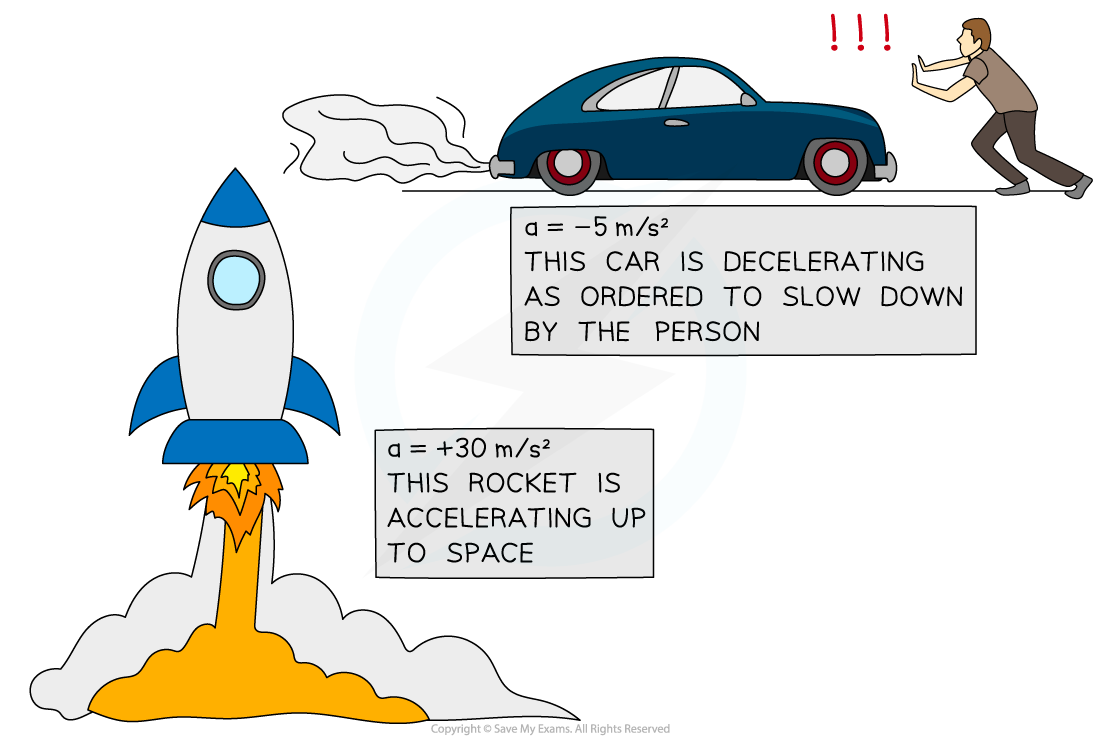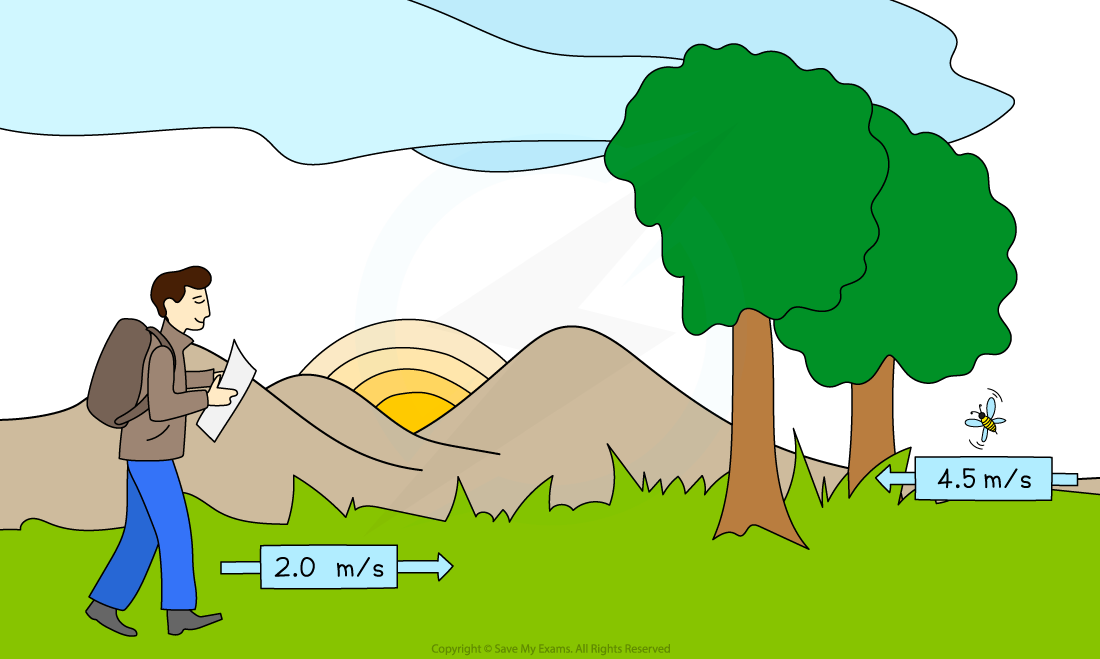Describing Motion (WJEC GCSE Physics): Revision Note
Exam code: 3420
Describing Motion
Speed & Velocity
Speed is a measure of how fast or slow an object is moving
It is a scalar quantity
Because it only contains a magnitude (without a direction)
The velocity of a moving object is similar to its speed, except it also describes the object’s direction
Velocity is a vector quantity
The velocity of an object contains both magnitude and direction
e.g. ‘15 m / s south’ or ‘250 mph on a bearing of 030°’
Comparing Speed and Velocity

The cars in the diagram above have the same speed (a scalar quantity) but different velocities (a vector quantity). Fear not, they are in different lanes!
Acceleration
Acceleration is defined as the rate of change of velocity
In other words, it describes how much an object's velocity changes every second
The acceleration of an object can be positive or negative, depending on whether the object is speeding up or slowing down
If an object is speeding up, its acceleration is positive
If an object is slowing down, its acceleration is negative (sometimes called deceleration)
Positive and Negative Acceleration

A rocket speeding up (accelerating) and a car slowing down (decelerating)
Calculating Speed & Acceleration
Calculating Speed
For objects that are moving with a constant speed, use the equation below to calculate the speed:
Where:
Speed is measured in metres per second (m/s)
Distance travelled is measured in metres (m)
Time taken is measured in seconds (s)
The Speed of Different Objects

A hiker might have a speed of 2.0 m/s, whereas a particularly excited bumble bee can have a speed of up to 4.5 m/s
Calculating Acceleration
The equation below is used to calculate the average acceleration of an object:
Where:
= acceleration in metres per second squared (m/s2)
= change in velocity in metres per second (m/s)
= time taken in seconds (s)
The change in velocity is found by the difference between the initial and final velocity, as written below:
change in velocity = final velocity − initial velocity
Where:
= final velocity in metres per second (m/s)
= initial velocity in metres per second (m/s)
Worked Example
Planes fly at typical speeds of around 250 m/s. Calculate the total distance travelled by a plane moving at this average speed for 2 hours.
Answer:
Step 1: List the known quantities
Average speed = 250 m/s
Time taken = 2 hours
Step 2: Write the relevant equation
Step 3: Rearrange for the total distance
total distance = average speed × time taken
Step 4: Convert any units
The time given in the question is not in standard units
Convert 2 hours into seconds:
2 hours = 2 × 60 × 60 = 7200 s
Step 5: Substitute the values for average speed and time taken
total distance = 250 × 7200
total distance = 1 800 000 m
Worked Example
A Japanese bullet train decelerates at a constant rate in a straight line. The velocity of the train decreases from 50 m/s to 42 m/s in 30 seconds.
(a) Calculate the change in velocity of the train.
(b) Calculate the deceleration of the train, and explain how your answer shows the train is slowing down.
Answer:
Part (a)
Step 1: List the known quantities
Initial velocity,
Final velocity,
Step 2: Write down the relevant equation
change in velocity = final velocity − initial velocity
Step 3: Substitute values for final and initial velocity
The velocity of the train decreases by 8 m/s
Part (b)
Step 1: List the known quantities
Change in velocity,
Time taken,
Step 2: Write down the relevant equation
Step 3: Substitute the values for change in velocity and time
Step 4: Interpret the value for deceleration
The answer is negative, which indicates the train is slowing down
Examiner Tips and Tricks
Remember the units for acceleration are metres per second squared, m/s2. In other words, acceleration measures how much the velocity (in m/s) changes every second, m/s/s.

Unlock more, it's free!
Did this page help you?